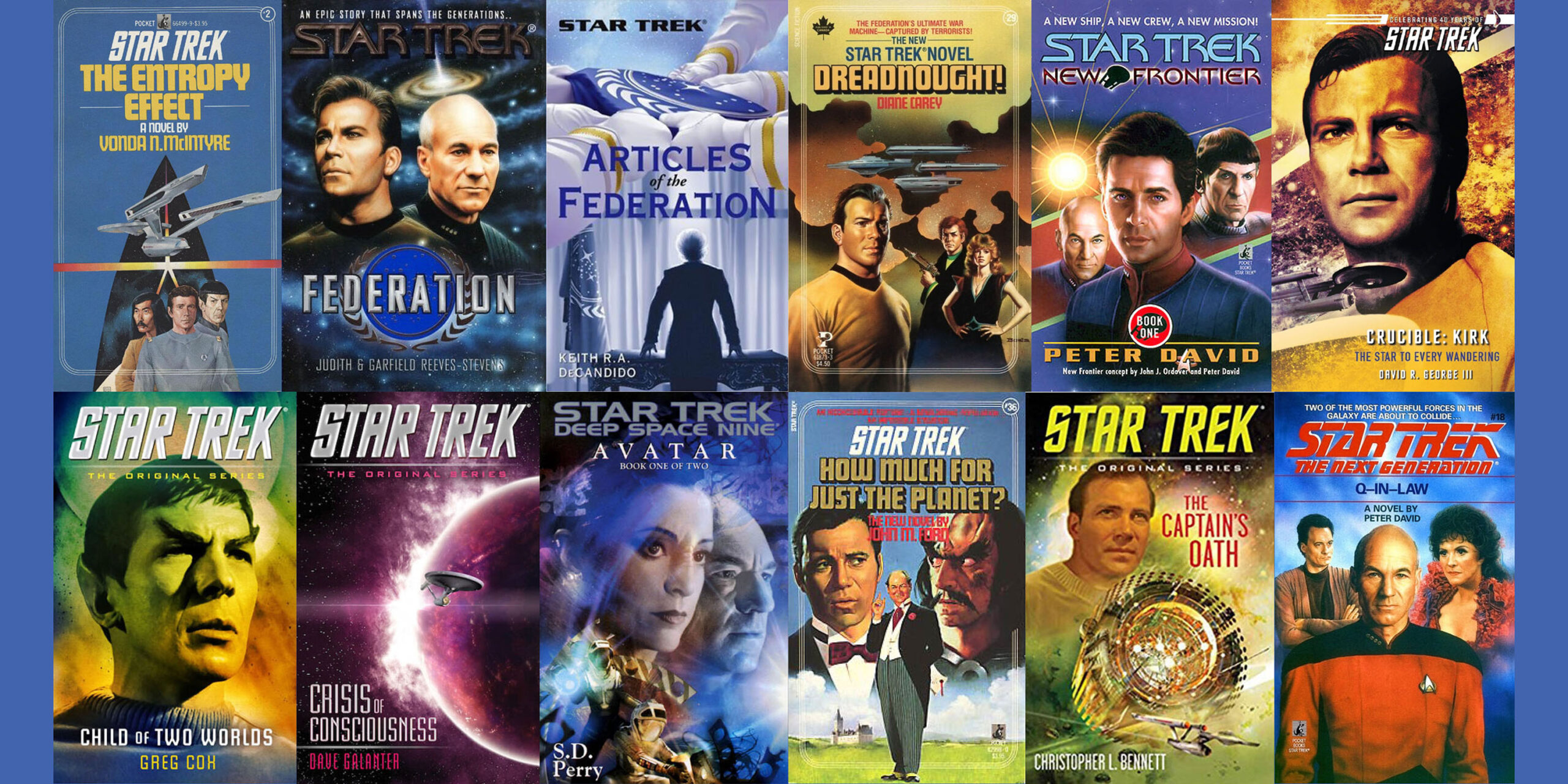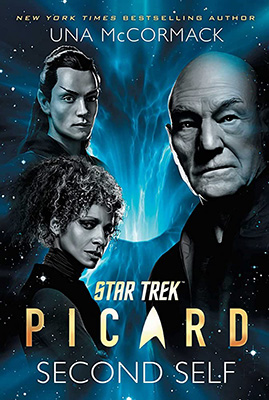
Star Trek: Picard: Second Self

In general, I don’t like the world created by the Star Trek: Picard series (though I am happy to say I loved the soft reboot of Picard season three!), and I’m extra frustrated that the new continuity of the Picard show has destroyed the last two decades of continuity that had been developed in Simon & Schuster’s Star Trek novels. (That continuity was brought to a close in the three-book Coda series, which was OK but not the ending I’d hoped for.) But I was interested in this novel because I have loved Una McCormack’s previous Star Trek novels. In particular, over the past decade, she’s proven to have a special affinity for the Cardassians and, in specific, for Garak. I knew this book featured both Garak and the Cardassians, and so I was interested; I’ll also admit that I was curious to see how Ms. McCormack would adapt all of the work she’s previously done with the Cardassians and with Garak for this new Picard continuity. (In a similar fashion to how I was curious to see how James Swallow would adapt the continuity of the Titan novels — set after Star Trek: Nemesis and depicting Riker’s first command — for the new Picard continuity, in the recent Picard novel The Dark Veil.)
For the most part, I loved this novel! It’s another fantastic Cardassian and Garak story by Ms. McCormack. And, just as she did in her previous Picard novel, The Last Best Hope, I was impressed by how skillfully Ms. McCormack was able to take characters and situations from Picard and make them so much more compelling than they were on the TV show! Right away in the first fifty-or-so pages of the book, I was delighted by how interested Ms. McCormack made me in Raffi and Elnor! She wrote them both beautifully, perfectly in-character with their portrayals on Picard. She’s skillfully taken what was established in Picard and made them both even more complex and interesting. Raffi has always been depicted on Picard as someone with a complicated past, and Ms. McCormack really digs into that here. I love this version of Raffi — on the one hand, she is 100% a heroic Star Trek hero, trying her very best to do the right thing, regardless of the personal cost to herself; but she’s also a flawed character prone to bad language (the use of “fuck” in the Picard series premiere was attention grabbing; I smiled to see Raffi use that word a few times here) and bad decisions (including some recreational drug use). I was even more taken by this version of Elnor. I loved how Ms. McCormack explored the repercussions of the “absolute candor” of Elnor’s Qowat Milat upbringing, and how that might be challenging for both Elnor himself and others, like Raffi, who want to be able to trust his discretion in the middle of a tricky diplomatic situation. (There are some wonderful sequences in the book in which we see Elnor do his best to walk that tightrope.) Repeatedly while reading this novel, I’d ask myself: why weren’t these characters this good during the first two seasons of Picard??
I loved the way Ms. McCormack wove together so many different threads from the tapestry of Star Trek continuity to develop this story, and specifically the complicated political situation and history on the planet Ordeve. She dug deeply into a lot of wonderful Deep Space Nine stuff, from the Cardassian occupation of Bajor to the Dominion War. I particularly loved the way she explored what happened to the Federation-Romulan alliance in the tense post-war days. I’ve often wondered about that!! (I’d hoped a post-DS9 Trek show would have explored that, but that never really happened.) That’s all woven together with the back-story of Picard, including Picard and Raffi’s ultimately failed mission to help the Romulans relocate their population in advance of the destruction of their homeworld. It’s all skillfully done.
The novel has a very unusual structure. It’s divided into five sections. The first and last sections take place in 2399, “After Coppelius” (the location for the events in the season one finale of Star Trek: Picard). The second and fourth sections take place in 2376, “After the Dominion War”, and depict Raffi’s tough original mission on Ordeve. The middle chunk of the book, the third section, takes place even before that, in 2340, “During the Occupation”, and explore what went down on the planet between the Cardassians and the Bajorans so many decades ago. It’s a very unique structure, and I loved the way the book moved us backwards and then forwards again in time, peeling back the layers of the complicated events that had taken place on this beleaguered planet.
I loved the way Garak was used in the now-defunct continuity of Simon & Schuster’s Star Trek novels. Andrew Robinson, the actor who played Garak, wrote a brilliant novel exploring Garak’s character and his complicated past, back in 2000. It’s called A Stitch in Time, and it remains one of my favorite Garak novels. That novel kickstarted Garak’s major role in the post-finale DS9 series of novels. Many of the best of these were written by Ms. McCormack. In these stories, we followed Gary’s continuing adventures in his post as Cardassia’s Ambassador to the Federation, and eventually his ascension to the post of Castellan (the highest political office) of the Cardassian Union. I particularly enjoyed Ms. McCormack’s novel The Crimson Shadow, in which she depicted the development of an unlikely friendship between Garak and Captain Picard. That’s all been wiped away, now, by the Picard series. I was intrigued (and a little bummed, though I understand the decision) by Ms. McCormack to go a different way here with the Garak-Picard relationship. Here, Ms. McCormack establishes that, back when Garak worked for the Obsidian Order (the fearsome Cardassian secret service), he tortured the Romulan Tal Shiar agent Zhaban. (The Romulans Zhaban and Laris are seen living with Picard on his estate in the first season of Picard. Zhaban died off-screen between Picard season one and two.) And so, as the novel opens, Picard and Laris are focused on finding a way to track down Garak so they can have justice for Zhaban.
Beware SPOILERS in this next paragraph, as I’m going to discuss the book’s ending.
Are you still here? Are you sure? The only aspect of this book that I don’t absolutely love is the ending, in which Ms. McCormack depicts the final fate of Garak. First off, I’m sorry that Ms. McCormack and the Simon & Schuster team felt it necessary to depict the end of Garak’s life. Why not allow this great character to remain in play for future stories? Second, I don’t love having Garak’s death be caught up in a sci-fi time-travel story. Garak always felt like such a real, grounded character to me, that this fantastical type of story for the end of his life doesn’t sit right for me. I don’t think that was the right choice. That being said, Ms. McCormack does an excellent job at crafting a beautiful and moving ending for Garak. I admit to getting a little misty-eyed at a few points, particularly when I read the phrase chosen for Garak’s tombstone. (I also loved loved loved that, when Raffi and Elnor do track down Garak, she calls him Ambassador and he insists that he is just “plain, simple Garak”, just as he said to Dr. Bashir when they first met in the very second episode of DS9.) Speaking of Dr. Bashir, I wish he’d been in some way involved in this “last” Garak story. I wanted that bit of closure to their relationship. (Particularly because we never got that closure in the now-defunct “lit-verse” continuity, in which Bashir was comatose after taking down Section 31 and left in Garak’s care. But we never got a great final scene between these two characters. Bummer.)
Other than those objections with the choices made for the ending, I thought this was a spectacular book. It’s a wonderfully interesting and complex story that stands on its own, while also digging deep into Star Trek continuity in a way that thrilled a long-time fan like me. Ms. McCormack did a beautiful job bringing all of the main characters to life (especially Raffi, Elnor, and Garak). She has such empathy for these complicated and damaged characters, matched with a terrific understanding of the Cardassians (and other Star Trek alien species, such as the Romulans and Bajorans). I’m really glad to have read this.
Please support my website by clicking through one of our Amazon links the next time you need to shop! As an Amazon Associate, I earn from qualifying purchases. That means I’ll receive a small percentage from any product you purchase from Amazon within 24 hours after clicking through. Thank you!

Leave a Reply